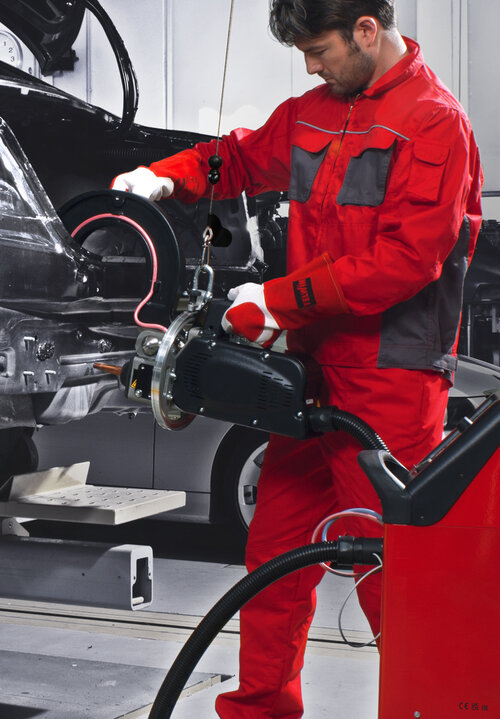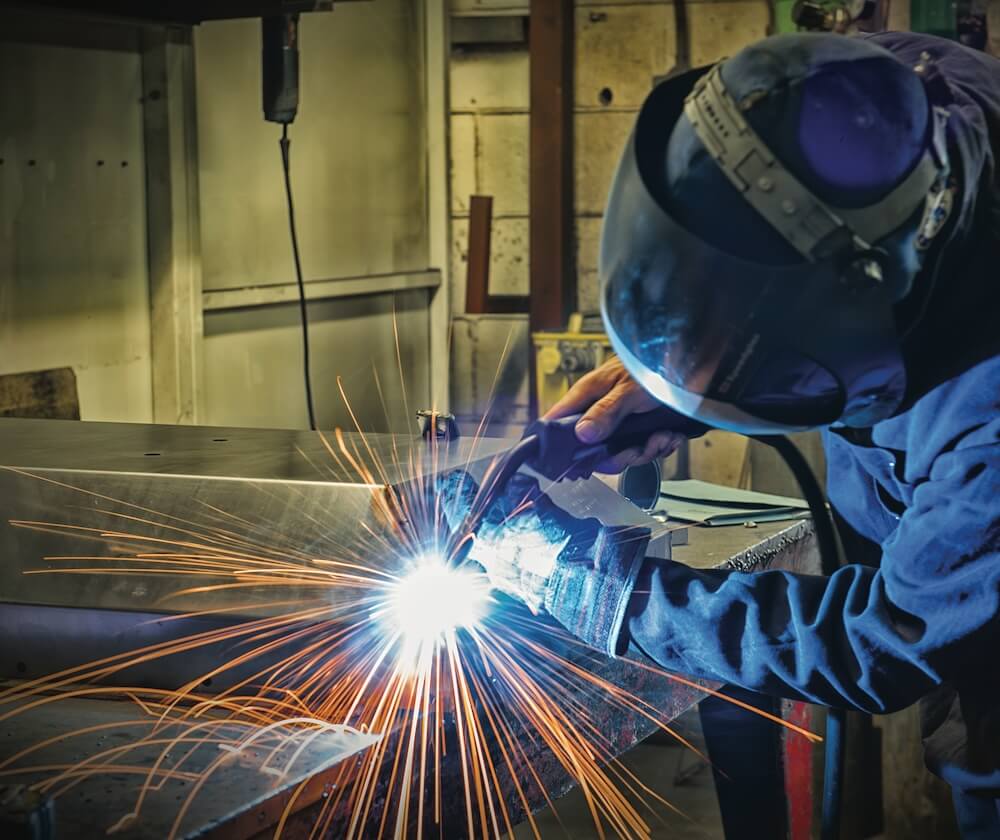Usual Welding Repair Issues and How to Address Them Properly
Welding repairs usually experience a series of issues that can endanger the honesty of the final item. Common problems consist of insufficient penetration, porosity, and imbalance, to name a few. Each defect provides distinct challenges that call for specific approaches for resolution. Understanding these problems is essential for welders aiming to boost their abilities and outcomes. This conversation will check out these typical welding repair concerns and efficient approaches to resolve them.
Poor Infiltration
Inadequate infiltration occurs when the weld metal falls short to fully fuse with the base material, leading to weak joints and possible structural failures. This concern commonly comes from not enough warm input, incorrect electrode angle, or improper welding speed. Welders might encounter insufficient penetration because of a miscalculation of the required specifications for a particular product density or type. Additionally, contamination on the base product's surface can impede reliable bonding, intensifying the issue. To resolve insufficient penetration, welders need to ensure appropriate setups on their tools and keep a tidy job surface. Normal evaluation of welds is advised to identify any kind of deficiencies early, enabling timely corrections and the avoidance of endangered structural stability in welded settings up.
Porosity
Porosity is an usual problem in bonded joints that materializes as small gas bubbles caught within the weld metal. This problem can compromise the stability of the weld, leading to lowered toughness and potential failure under stress and anxiety. Montana Mobile Welding and Repair Belgrade. Porosity generally emerges from contamination, moisture, or incorrect welding strategies, which allow gases to get away right into the molten weld swimming pool. To address porosity, welders must ensure correct surface prep work, maintain a clean workplace, and utilize suitable welding specifications. Furthermore, picking the right filler product and shielding gas can alleviate gas entrapment. Regular evaluation and testing of welds can help determine porosity early, guaranteeing timely rehabilitative actions are taken, thus protecting the quality and reliability of the welded framework
Misalignment
Imbalance in welding can occur from various factors, consisting of inappropriate arrangement and thermal expansion. Comprehending the root creates is essential for effective resolution. Numerous correction techniques are available to straighten components and guarantee structural integrity.
Reasons for Imbalance
Welding misalignment typically stems from a variety of underlying concerns that can compromise structural stability. One primary reason is incorrect fit-up of parts before welding, which can bring about spaces and unequal surfaces. Variations in thermal growth during the welding process can additionally cause distortion, particularly if the products being joined have different coefficients of development. Additionally, poor fixturing and securing might fall short to hold elements safely in position, causing activity during welding. Inadequately conserved equipment, consisting of welding makers and devices, may present variances in the weld bead, further adding to misalignment. Operator error, stemming from insufficient training or experience, can also play a significant function in creating misaligned welds.

Improvement Methods Readily Available
Resolving misalignment effectively needs a mix of rehabilitative techniques customized to the particular issues available. One usual method is the usage of jigs or components to hold elements in the right setting during welding, making sure constant positioning. Furthermore, preheating the materials can aid reduce distortion and enhance fit-up. For substantial misalignment, mechanical adjustment strategies, such as using hydraulic jacks or clamps, can be utilized to remedy the setting prior to welding. Post-weld warmth therapy might likewise be required to ease stress and anxieties triggered by misalignment. Cautious inspection and modification during the arrangement phase can protect against imbalance problems from coming to be substantial issues, advertising a smoother welding process and improving total structural integrity.
Distortion
Distortion is a typical challenge in welding that can emerge from different factors, including irregular home heating and cooling. Understanding the reasons of distortion is essential for applying reliable prevention strategies. Resolving this concern not only boosts architectural stability yet also boosts the general quality of the weld.
Reasons of Distortion
When based on the extreme warmth of welding, materials frequently go through modifications that can lead to distortion. This sensation largely emerges from thermal growth and tightening throughout the welding procedure. As the weld area warms up, the product expands; upon cooling, it contracts, which can create inner stresses. On top of that, uneven home heating throughout a work surface can aggravate these anxieties, leading to warping or flexing. The sort of product also plays a substantial duty; steels with varying thermal conductivity and coefficients of expansion might react in a different way, leading to unforeseeable distortions. Poor joint design and insufficient fixturing can contribute to imbalance during welding, enhancing the possibility of distortion. Understanding these reasons is important for effective welding fixing and prevention methods.
Prevention Techniques
Reliable avoidance strategies for distortion throughout welding concentrate on managing warm input and ensuring proper joint design. Maintaining a constant heat input helps to reduce thermal expansion and contraction, which can cause distortion. Making use of methods such as pre-heating the work surface can likewise lower the temperature level slope, promoting consistent heating. Additionally, picking suitable joint styles, such as T-joints or lap joints, can boost stability and lower tension concentrations. Carrying out proper fixturing to safeguard the work surfaces in area further aids in preserving placement during the welding procedure. Ultimately, staggered welding sequences can distribute warmth much more uniformly, preventing local distortion. By applying these strategies, welders can significantly reduce the likelihood of distortion and improve the overall quality of their welds.
Breaking
Breaking is an usual concern encountered in welding repair work, typically arising from different elements such as inappropriate air conditioning prices, product choice, or poor joint prep work. The event of fractures can significantly jeopardize blog here the stability of the weld, bring about potential failings throughout operation. To resolve this concern, welders need to initially analyze the root causes, ensuring that materials work and suitably chosen for the certain application. Furthermore, regulating the air conditioning price during the welding process is crucial; rapid cooling can generate stress and anxiety and cause cracking. Proper joint layout and preparation additionally contribute to reducing the threat. Executing these approaches can improve weld high quality and resilience, eventually decreasing the possibility of breaking in finished weldments.

Insufficient Combination
A substantial issue in welding repairs is insufficient fusion, which occurs when the weld metal does not adequately bond with the base product or previous weld passes - Montana Mobile Welding and Repair Belgrade Welding. This flaw can result in weaknesses in the joint, potentially compromising the stability of the welded structure. Aspects adding to insufficient combination include inadequate warmth input, improper welding technique, and contamination of the surface areas being signed up with. To address this concern properly, welders should assure proper pre-weld cleaning and surface preparation, in addition to change their welding specifications to accomplish appropriate penetration and fusion. Regular assessment during the welding procedure can likewise assist identify insufficient combination early, allowing for prompt rehabilitative actions to improve the total quality of the weld
Overheating
While welding repair services can boost structural stability, overheating presents a significant obstacle that can bring about material deterioration. Excessive warm during welding can change the mechanical residential properties of steels, causing decreased stamina, boosted brittleness, and warping. This phenomenon is particularly important in high-stress applications where architectural integrity is vital. Determining overheating can include aesthetic inspections for staining or distortion, along with monitoring temperature throughout the welding process. To mitigate the risks related to overheating, welders should employ ideal strategies, such as regulating warmth input, Click This Link readjusting travel speed, and making use of appropriate filler materials. Additionally, executing pre- and post-weld warmth treatments can help recover material residential or commercial properties and improve the total high quality of the repair, guaranteeing long-lasting efficiency and safety and security.
Often Asked Inquiries
What Are the Typical Indicators of a Welding Problem?

Exactly How Can I Examine My Welds for Quality?
To examine welds for high quality, one can utilize visual evaluations, ultrasonic screening, and radiographic methods. Each technique assures architectural honesty, determines problems, and verifies adherence to defined standards, inevitably boosting the reliability of the bonded joints.
What Safety Safety Measures Should I Take While Welding?
When welding, one need to prioritize safety by using appropriate individual safety equipment, making certain appropriate ventilation, safeguarding combustible materials away, keeping a clean workspace, and understanding surroundings to stop accidents and injuries.
Can I Repair a Weld Without Renovating the Entire Joint?
Repairing a weld without redoing the entire joint is possible, depending upon the damages (Montana Mobile Welding and Repair). Strategies such as grinding, including filler material, or using a welding process can properly address details flaws while protecting the bordering framework
What Devices Are Important for Efficient Welding Fixes?
Necessary tools for reliable welding repair work consist of a welding maker, wire brush, mill, protective equipment, clamps, and filler products. Each tool plays a vital duty in guaranteeing quality and safety during the fixing procedure. Porosity generally arises from contamination, moisture, or incorrect welding techniques, which enable gases to run away into the liquified weld pool. Poorly maintained devices, consisting of welding makers and tools, may introduce inconsistencies in the weld grain, additional contributing to misalignment. When subjected to the intense Visit Website warm of welding, materials typically go through changes that can lead to distortion. Breaking is a typical problem come across in welding repairs, frequently resulting from numerous aspects such as incorrect air conditioning rates, material selection, or inadequate joint prep work. A considerable concern in welding repairs is insufficient fusion, which happens when the weld metal does not sufficiently bond with the base product or previous weld passes.